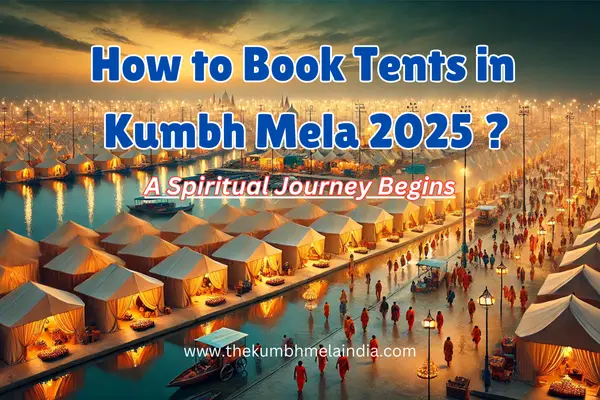The Kumbh Mela is one of the largest religious gatherings in the world. Millions of people come together to take part in this holy festival, believing that by bathing in sacred rivers, they can cleanse themselves of sins and achieve salvation. But why is this grand event celebrated every 12 years? To answer this, let’s dive into the fascinating history, tradition, and significance of the Kumbh Mela festival.
Kumbh Mela Festival: A Spiritual Gathering Like No Other
The Kumbh Mela festival is a significant event in Hinduism, attracting pilgrims from all corners of the globe. Whether you're familiar with Hindu traditions or new to this culture, you’ve likely heard of the Kumbh Mela’s grandeur, where faith, devotion, and spirituality converge in one place. The Kumbh Mela occurs at four specific locations in India, rotating every 12 years, which adds to the uniqueness of this religious pilgrimage.
Kumbh Mela History: Origin of the Divine Celebration
To understand why Kumbh Mela is celebrated every 12 years, we must first explore its rich history. According to Hindu mythology, the origins of the Kumbh Mela trace back to the story of the Samudra Manthan, or the churning of the ocean of milk. This mythological tale describes how the gods (Devas) and demons (Asuras) churned the ocean to obtain Amrit (the nectar of immortality).
As the churning process concluded, a pot (kumbh) filled with the nectar of immortality emerged. In a battle to seize the pot, a few drops of this nectar fell on Earth at four locations: Prayagraj, Haridwar, Ujjain, and Nashik. These locations have since been considered sacred, and it is believed that bathing in the rivers at these places during Kumbh Mela can wash away one’s sins and grant spiritual purification.
Why Is Kumbh Mela Celebrated Every 12 Years?
One of the most intriguing aspects of the Kumbh Mela is its unique 12-year cycle. The 12-year interval corresponds to the alignment of the planet Jupiter (Brihaspati) with the Sun and Moon. Astrologically, the Kumbh Mela is held when these celestial bodies are in a favorable position, which is considered spiritually significant.
Each of the four Kumbh Mela locations – Prayagraj (Allahabad), Haridwar, Ujjain, and Nashik – follows its own 12-year cycle based on specific astrological alignments. For example, the Kumbh Mela at Prayagraj occurs when Jupiter is in Taurus and the Sun and Moon are in Capricorn.
Which King Started Kumbh Mela at Prayagraj?
The celebration of the Kumbh Mela at Prayagraj, formerly known as Allahabad, dates back centuries. The event gained more structure and recognition during the reign of King Harshavardhana in the 7th century. King Harshavardhana, who ruled over northern India, was a great patron of Hinduism and Buddhism. He played a crucial role in promoting the Kumbh Mela, turning it into a massive congregation where religious and cultural exchanges took place. His efforts helped institutionalize the event and solidified Prayagraj as one of the major locations for the Kumbh Mela festival.
Kumbh Mela in Which State?
The Kumbh Mela is celebrated in four different states of India, each hosting the festival at specific intervals:
Each of these places is associated with one of the sacred rivers in India – the Ganga (Haridwar and Prayagraj), the Godavari (Nashik), and the Shipra (Ujjain). Depending on the location, the religious significance and rituals may vary, but the core tradition of bathing in the holy rivers remains constant.
The Importance of Bathing During Kumbh Mela
Bathing in the sacred rivers during Kumbh Mela holds deep spiritual significance. Hindus believe that by taking a holy dip in these waters, especially when the celestial bodies are aligned, they can wash away their sins and attain moksha (salvation). The rivers, infused with drops of the divine nectar from the Samudra Manthan, are believed to hold transformative powers during this time.
You May Also Interested:
- Frequently Asked Questions about Maha Kumbh Mela 2025
- Kumbh Mela 2025 Bathing Dates (Shahi Snan / Non-Shahi Snan Dates)
- Accommodation in Kumbh Mela 2025
- Kumbh Mela Packages Booking
- Guide Services in Kumbh Mela
- Car / Taxi Rental Services in Kumbh Mela
Types of Kumbh Mela
The Kumbh Mela is celebrated in different forms based on the frequency and location:
- Purna Kumbh Mela: Held every 12 years at Prayagraj, this is the largest and most significant Kumbh Mela.
- Ardh Kumbh Mela: Occurs every six years at Prayagraj and Haridwar.
- Maha Kumbh Mela: This grand event happens once every 144 years (after 12 Purna Kumbh Melas) in Prayagraj.
- Magh Mela: An annual festival that takes place in Prayagraj, considered a smaller version of the Kumbh Mela.
Key Rituals of Kumbh Mela Festival
- Shahi Snan (Royal Bath): This is one of the most important rituals, where sadhus and saints from different akharas (Hindu monastic orders) lead the ceremonial bathing. The sadhus, particularly the Naga Sadhus, are the first to take a dip in the holy river.
- Processions: During the Kumbh Mela, elaborate processions of sadhus and religious leaders are a common sight. These processions are filled with spiritual fervor and showcase various Hindu traditions.
- Spiritual Discourses: Religious leaders and gurus hold discourses, debates, and sermons on spiritual topics, which draw large crowds of devotees.
The Spiritual Energy of Kumbh Mela
For many, attending the Kumbh Mela is not just a pilgrimage but a once-in-a-lifetime experience. The atmosphere is charged with devotion, faith, and spiritual energy, making it a transformative journey for millions. From the banks of the sacred rivers to the vibrant tents of sadhus and pilgrims, every moment at Kumbh Mela feels like a step closer to the divine.
Conclusion: The Eternal Significance of Kumbh Mela
The Kumbh Mela is more than just a festival; it’s a celebration of faith, tradition, and spiritual awakening. Celebrated every 12 years, it offers a chance for devotees to reconnect with their spiritual roots, cleanse their souls, and be part of an age-old tradition that has transcended generations. Whether you're a pilgrim or an observer, the Kumbh Mela leaves a lasting impact, resonating with a deeper sense of connection to the divine and the universe.
FAQs
- Why is Kumbh Mela celebrated? Kumbh Mela is celebrated to honor the event where drops of nectar from the Samudra Manthan fell at four locations on Earth, which are now considered sacred.
- Where is the Kumbh Mela held? The Kumbh Mela is held at four locations in India: Prayagraj, Haridwar, Nashik, and Ujjain.
- What is the significance of bathing in Kumbh Mela? Bathing in the sacred rivers during Kumbh Mela is believed to cleanse one’s sins and offer spiritual purification, leading to moksha (salvation).
- Who started the Kumbh Mela in Prayagraj? King Harshavardhana is credited with institutionalizing the Kumbh Mela at Prayagraj during the 7th century.
- Why is Kumbh Mela celebrated every 12 years? The Kumbh Mela follows a 12-year cycle based on the astrological alignment of Jupiter, the Sun, and the Moon, which is considered spiritually significant.






